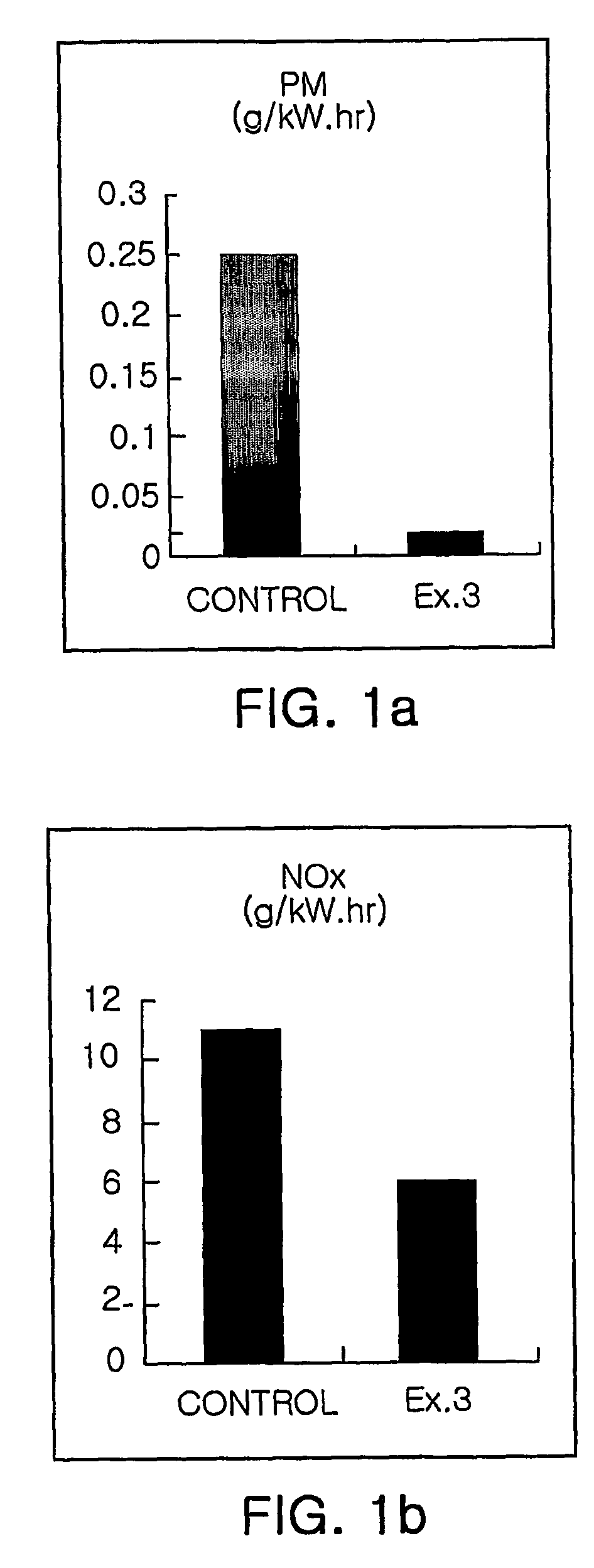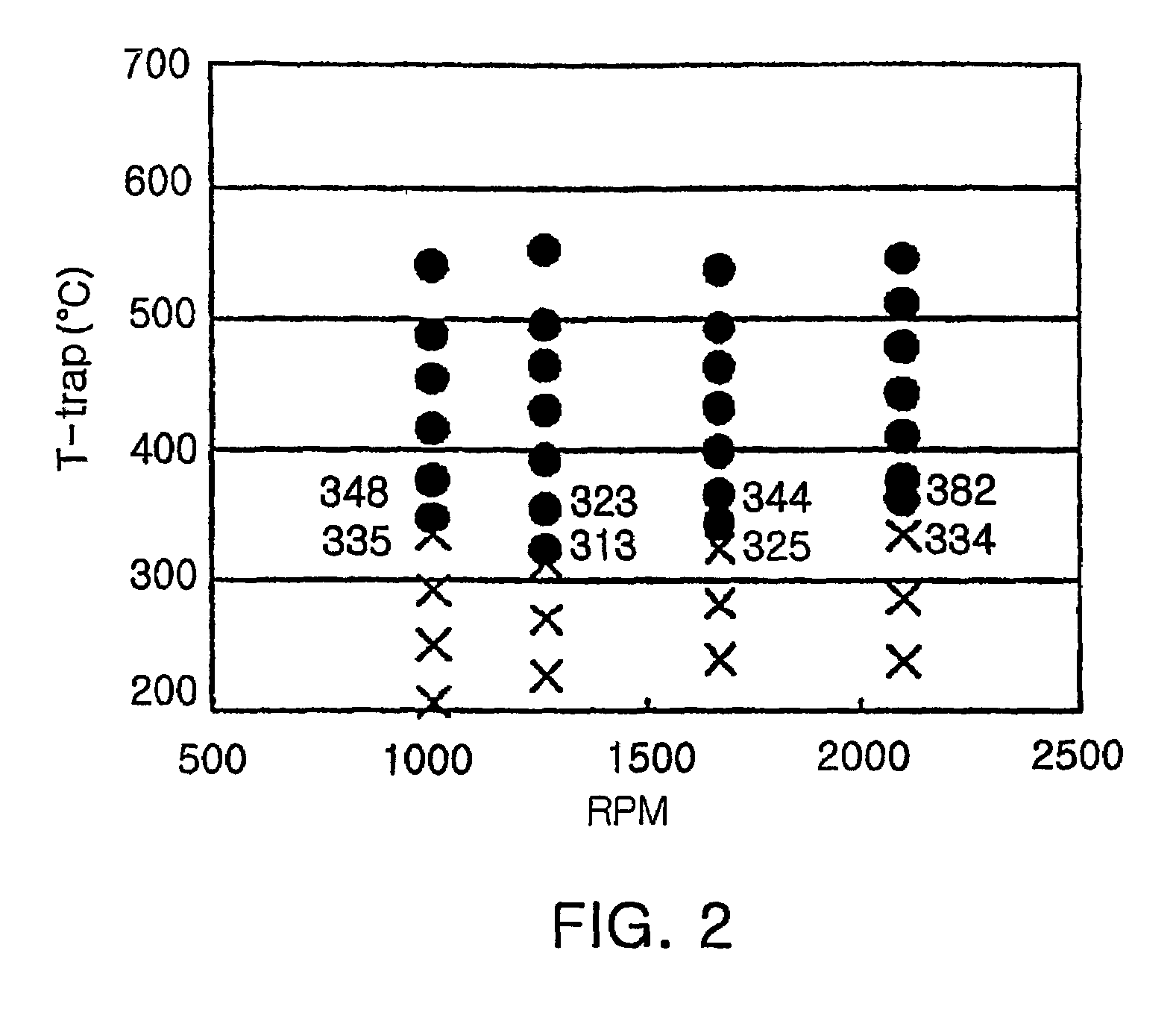Catalytic filter for removing soot particulates from diesel engine exhaust and method of preparing the same
a technology of catalytic filter and diesel engine, which is applied in the direction of catalyst activation/preparation, metal/metal-oxide/metal-hydroxide catalyst, and air quality improvement, etc., which can solve the problems of increasing visual discomfort, affecting human health, and affecting the degree of air pollution
- Summary
- Abstract
- Description
- Claims
- Application Information
AI Technical Summary
Benefits of technology
Problems solved by technology
Method used
Image
Examples
example 1
[0053](1) Preparation of Colloidal Metal Salt Solution
[0054]Platinic Colloidal Solution
[0055]In a 2 L flask, 252 g of polyvinylpyrrolidone (average molecular weight: 10,000, Aldrich Chemical) was dissolved in 1 L of deionized water to make a uniform solution, which was then added with 30.4 g of chloroplatinic acid and 1 L of methanol with vigorous stirring. The solution was refluxed at 80° C. for 6 hours, and filtered to obtain 2,070 g of a dark brown platinic colloidal solution containing 0.62 wt % of platinum.
[0056]Preparation of Aqueous Metal Salt Solution
[0057]15.4 g of ammonium molybdate, 40 g of magnesium nitrate, and 10 g of potassium hydroxide were added to 250 mL of deionized water with vigorous stirring, to prepare aqueous solutions of molybdenum, magnesium, and potassium.
[0058]Preparation of Colloidal Solution Mixture
[0059]The above platinic colloidal solution was mixed with the aqueous magnesium solution at a weight ratio of 1:1, to make a colloidal metal salt solution f...
example 2
[0062]A catalytic wall-flow filter for removal of soot from diesel engine exhaust was prepared in the same manner as in Example 1, with the exception that flow-through ceramic monolith having a diameter of 10.5 inch, a length of 3 inch and a cell density of 400 cpsi, and wall-flow ceramic filter (Corning Inc.) having a diameter of 10.5 inch, a length of 12 inch and a cell density of 200 cpsi, were used as substrates for the oxidation catalyst and the catalyzed wall-flow filter.
example 3
[0063]The catalytic filter prepared in Example 2 mounted to an exhaust pipe of Hyundai Aerocity Bus 540 having an exhaust air volume of 11,149 cc, and subjected to field test in D-13 mode. Subsequently, the reduction of soot particulates in exhaust gas was measured. The results are depicted in FIGS. 1a to 1d.
[0064]As is shown in FIGS. 1a to 1d, the catalytic filter of the present invention reduced 92% or more of soot particulates (PM), 85% of CO and HC, and 19% of NOx.
PUM
| Property | Measurement | Unit |
|---|---|---|
| weight ratio | aaaaa | aaaaa |
| weight ratio | aaaaa | aaaaa |
| diameter | aaaaa | aaaaa |
Abstract
Description
Claims
Application Information
 Login to View More
Login to View More - R&D
- Intellectual Property
- Life Sciences
- Materials
- Tech Scout
- Unparalleled Data Quality
- Higher Quality Content
- 60% Fewer Hallucinations
Browse by: Latest US Patents, China's latest patents, Technical Efficacy Thesaurus, Application Domain, Technology Topic, Popular Technical Reports.
© 2025 PatSnap. All rights reserved.Legal|Privacy policy|Modern Slavery Act Transparency Statement|Sitemap|About US| Contact US: help@patsnap.com



